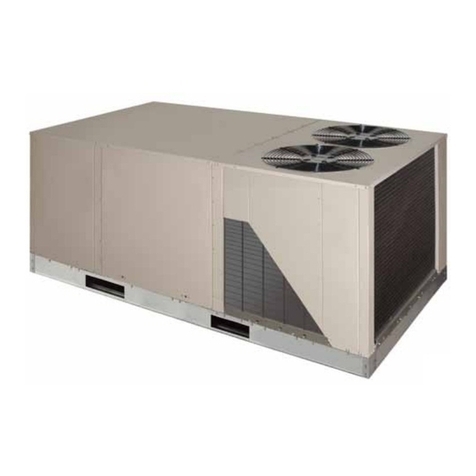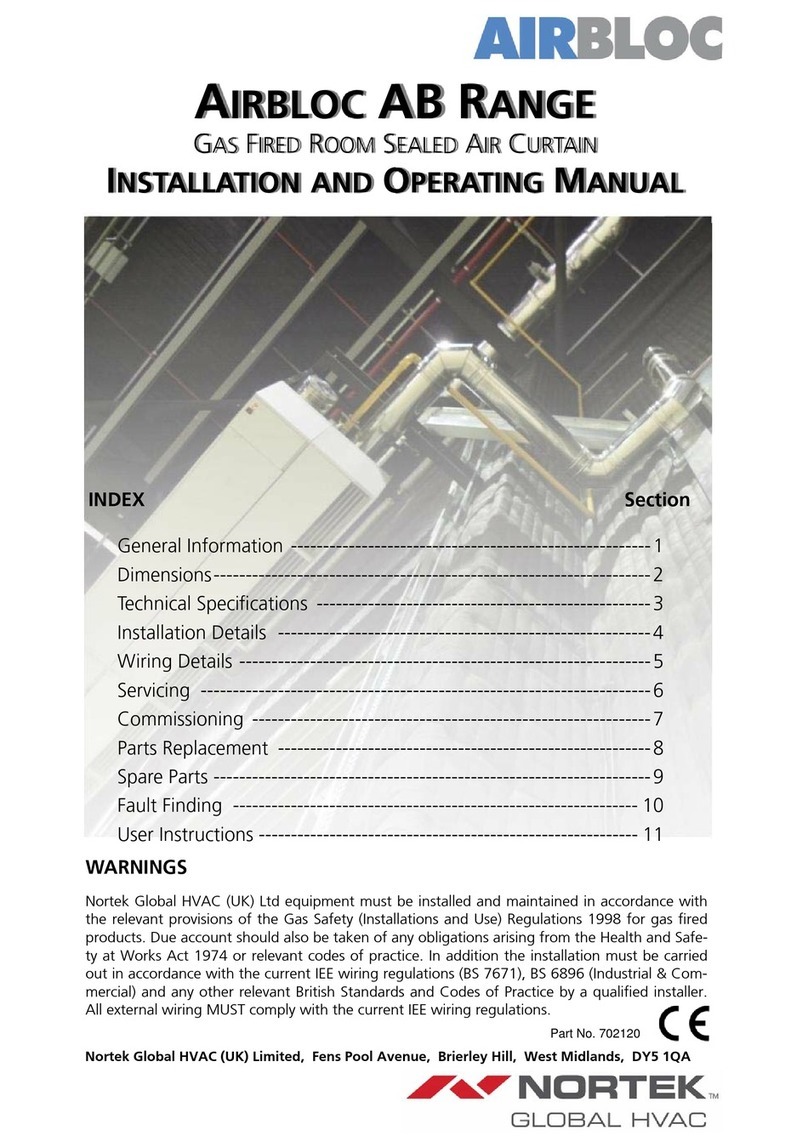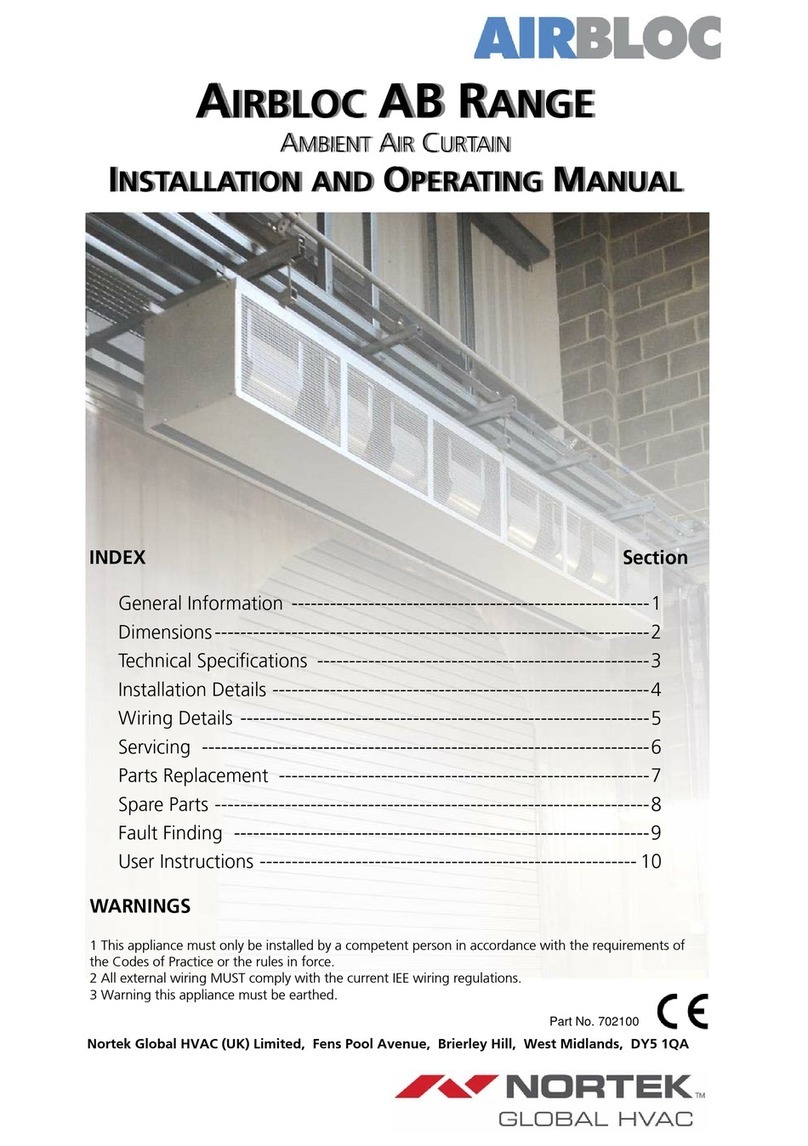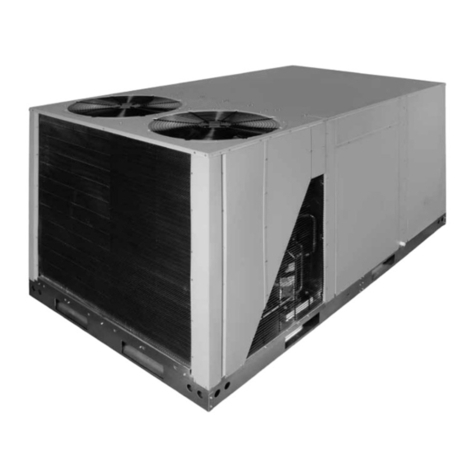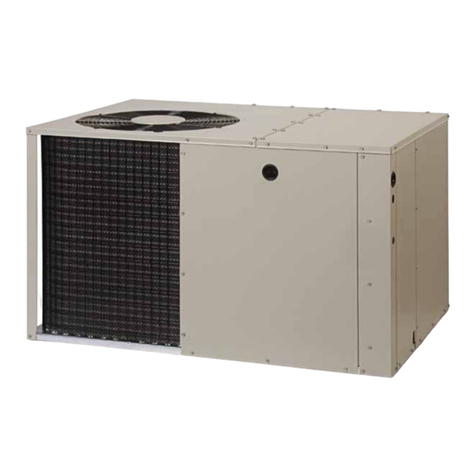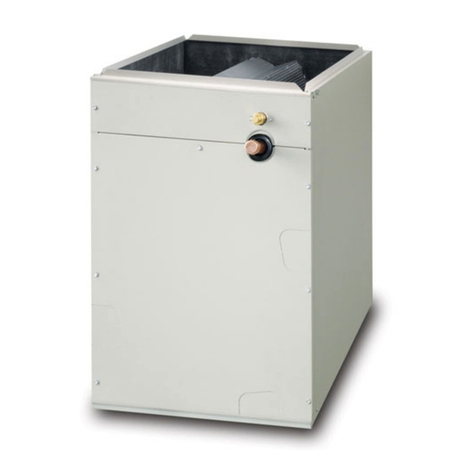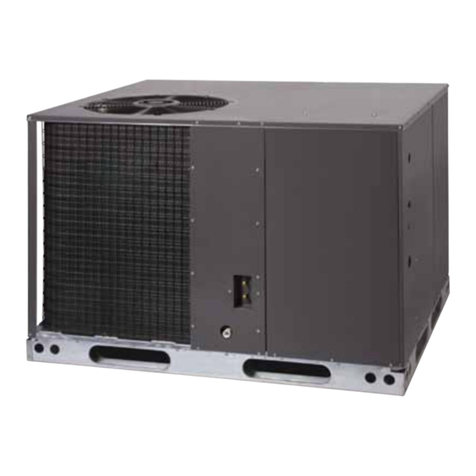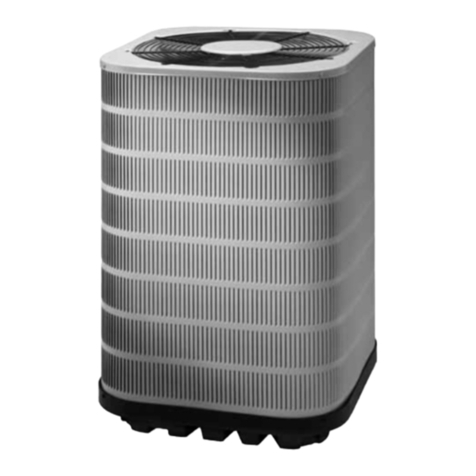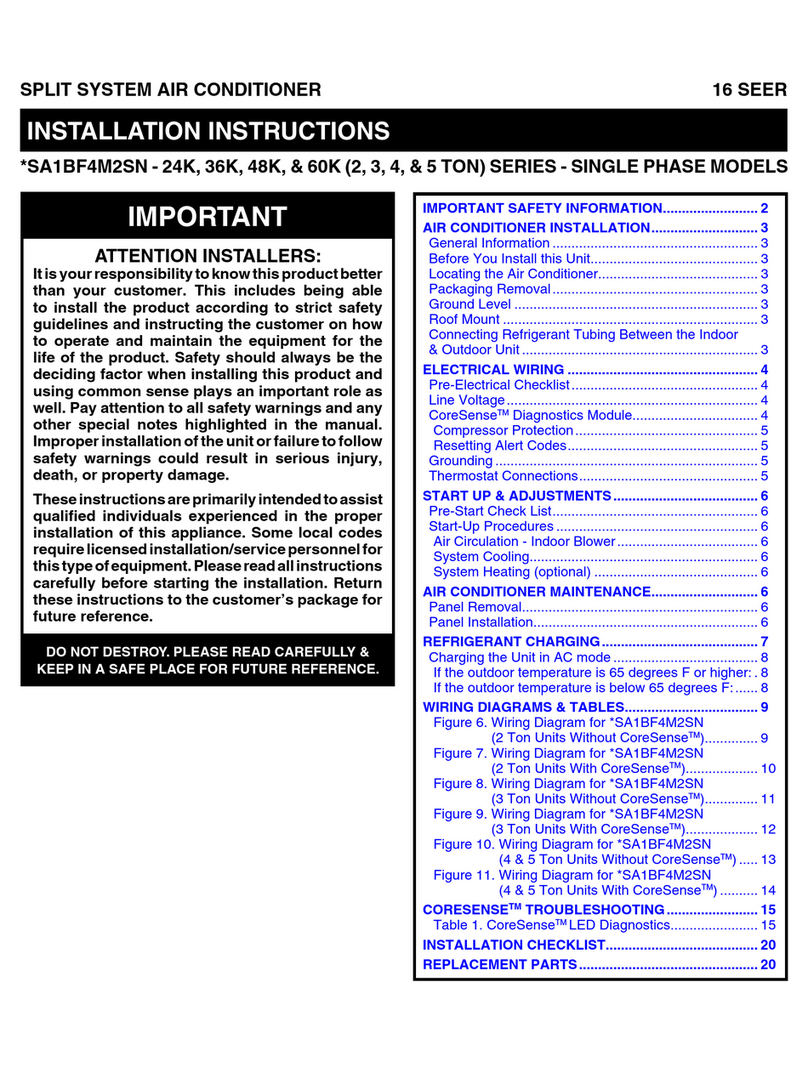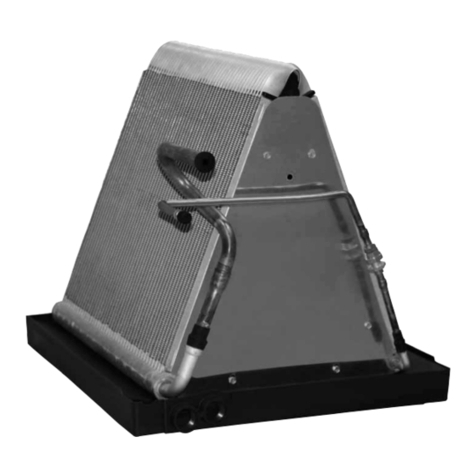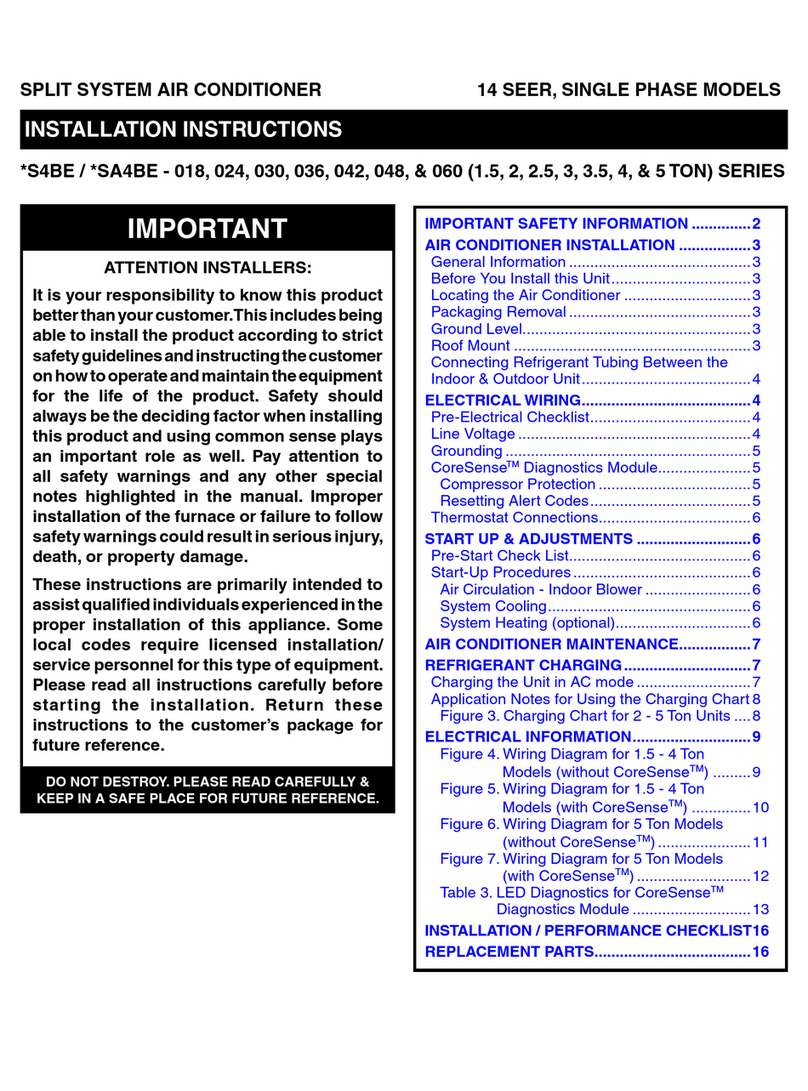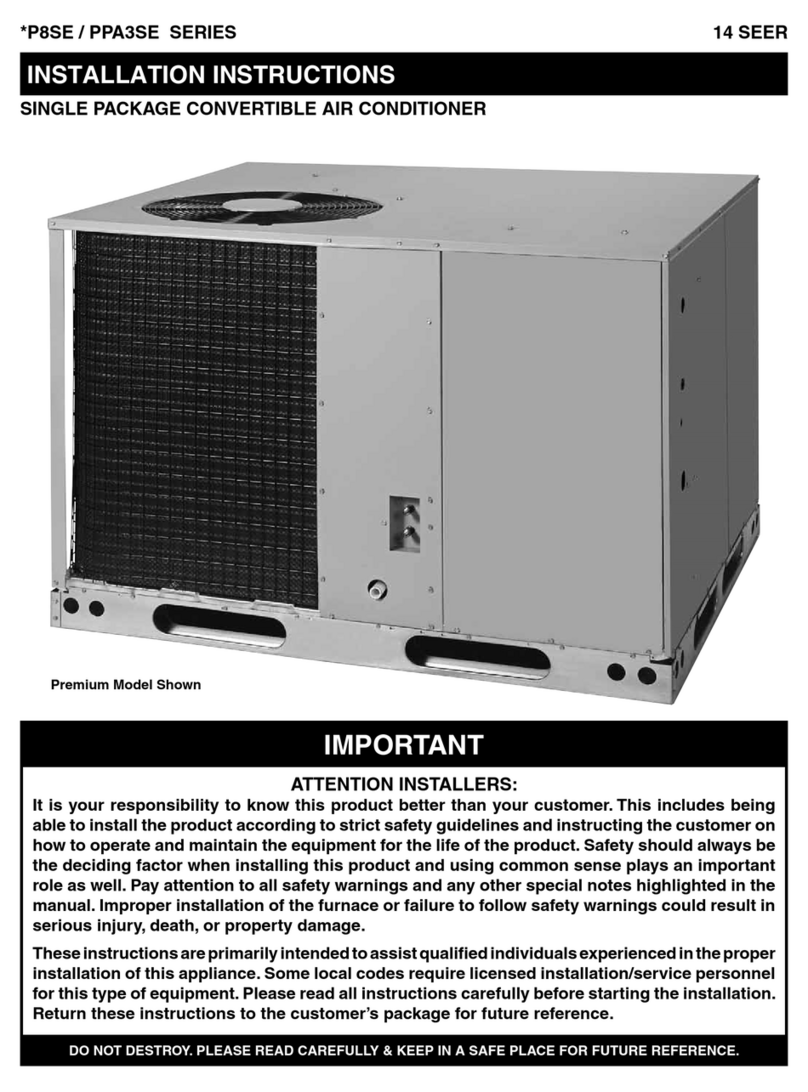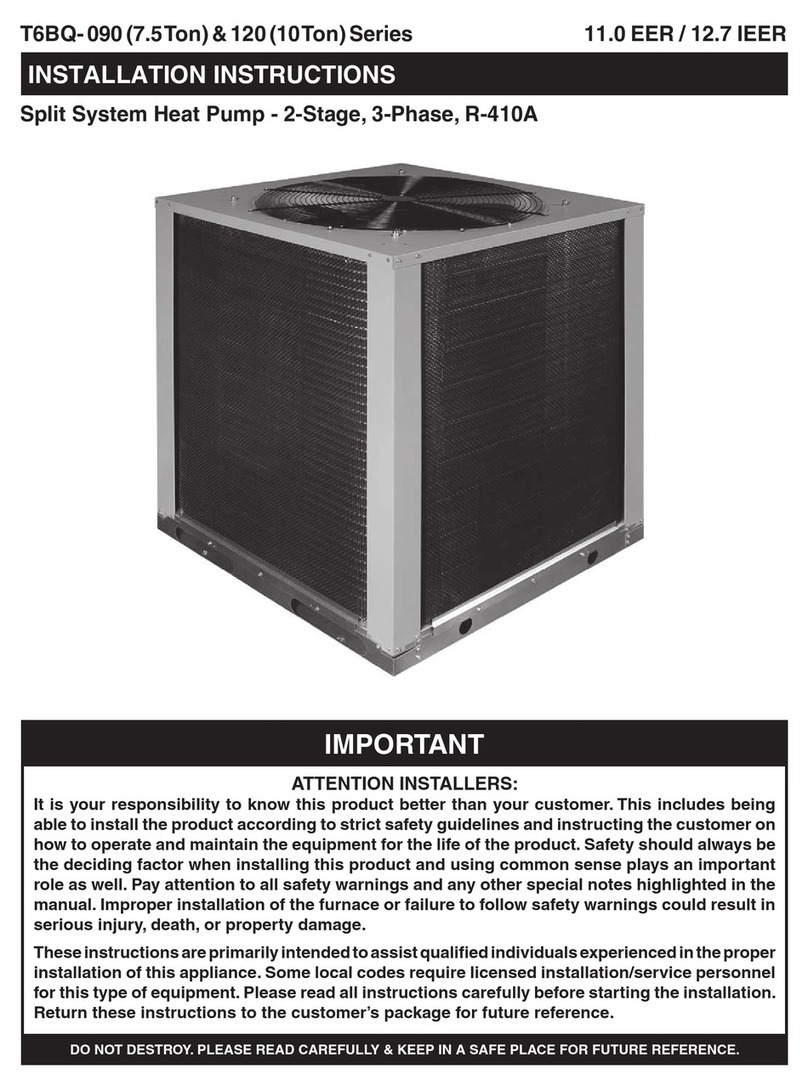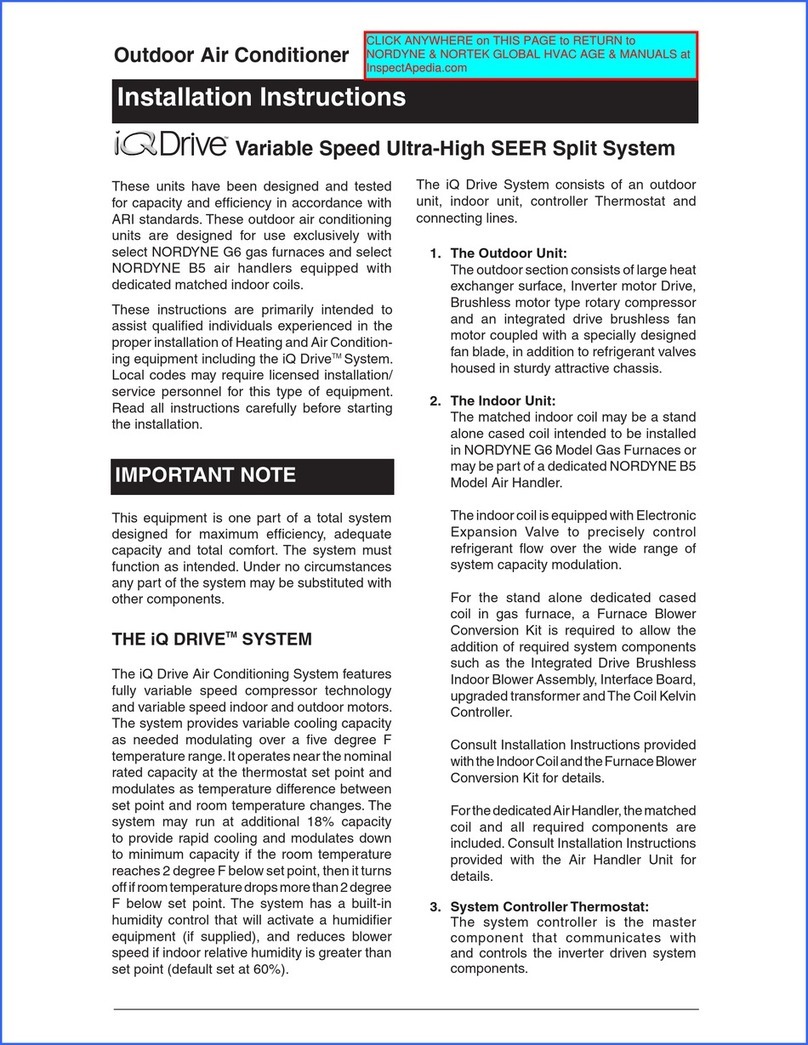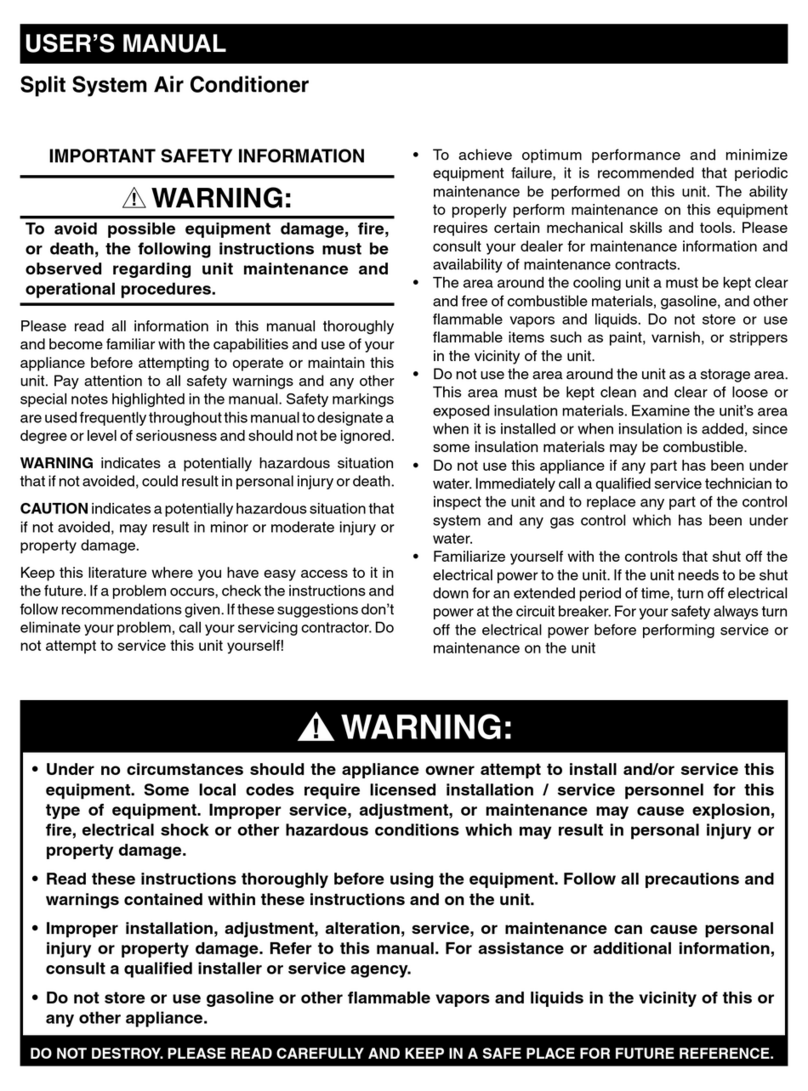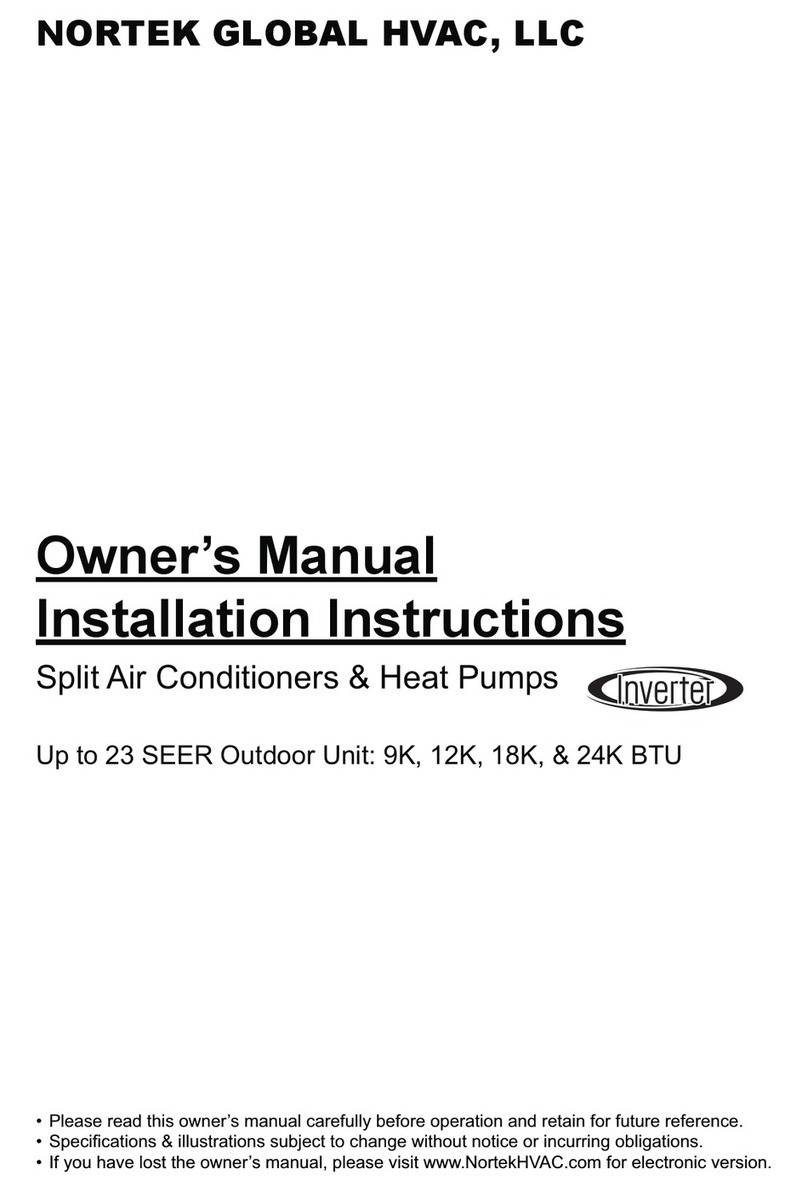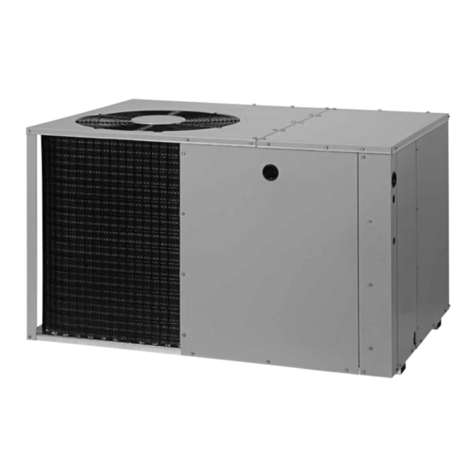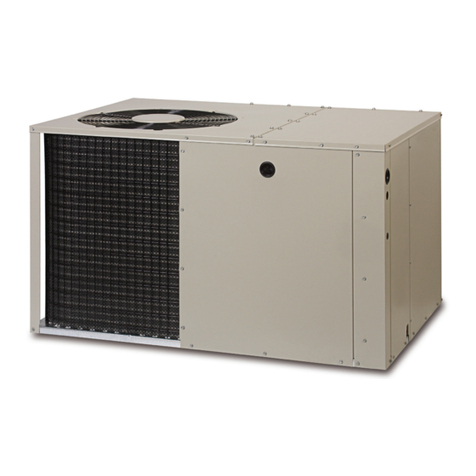
5
operate within the airflow and other operational parameters
prescribed in all of the units provided instructions and
technical specifications.
• Installation of this outdoor unit with other, non-listed
indoor unit combinations may require different airflows,
expansion devices, charge values and system setup from
the instructions provided here and with this unit. Nortek
does not recommend the use of this product in unlisted
combinations, and the system performance and efficiency
values of unlisted unit combinations may be different than
the listed product combinations.
• *SH3ME4M outdoor units with non-AHRI listed indoor coils
are not recommended. Deviations from rated airflows or
non-listed combinations may require modification to the
expansion device and refrigerant charging procedures for
proper and efficient system operation.
• The refrigerant charge can be checked and adjusted through
the service ports provided external to the outdoor unit. Use
only gage line sets which have a “Schrader” depression
device present to actuate the valve.
• An automatic high-pressure switch is factory-installed
installed in these units and is located on the discharge
line after the unit's compressor. This switch is designed to
protect the system when very high pressures occur during
abnormal conditions. Under normal conditions, the switch
is closed. If the system pressure rises to 650 psig, then
the switch will open and de-energize the contactor coil
in the outdoor unit. The switch will close again once the
liquid pressure decreases to 460 psig and allow the unit
to restart.
• An automatic low-pressure switch is factory-installed
on these units and is located on the suction line. This
auto-reset switch is designed to protect the system from
abnormal operation and events that could otherwise harm
the compressor. When the refrigeration system is at normal
pressures, the switch will be closed. If the compressor
suction pressure falls below 20 psig, the switch will open.
If the compressor suction pressure then rises to 35 psig,
the switch will automatically re-close.
• These outdoor heat-pump units have an Anti-short cycle
control incorporated into the defrost control board. This
control will only allow the compressor to restart 5 minutes
after the last call for operation was terminated.
• These outdoor heat-pumps units have been configured
with a compressor crankcase heater (CCH) that will
operate when the compressor is not energized. It is highly
recommended to allow the CCH to operate for 24 hours
prior to the initial unit start-up.
• These outdoor heat-pump units have been configured
with an outdoor thermostat switch in the control panel
compartment for compliance with US 24 CFR § 3280.714
(2022) requirements on Manufactured Housing Applications
with electrical resistance heating means. The SPST switch
will be open when ambient temperatures are above 40F and
will close at 25F. Refer to the Low Voltage Connections
Section for additional information.
• These heat-pump units have an additional Schrader port
on the compressor suction line located on the lower service
panel of the unit, above the refrigerant line connections.
This will allow a qualified technician to make a suction DP
measurement across the system accumulator and reversing
valve, or for the true compressor SH to be measured.
ELECTRICAL WIRING
WARNING:
To avoid risk of electrical shock, personal
injury, or death, disconnect all electrical power
to the unit before performing any maintenance
or service. The unit may have more than one
electrical supply.
Label all wires prior to disconnection when
servicing the unit. Wiring errors can cause
improper and dangerous operation.
• All electrical connections must be in compliance with
all applicable local codes and ordinances, and with
the current revision of the National Electric Code
(ANSI/NFPA 70).
• For Canadian installations the electrical connections and
grounding shall comply with the current Canadian Electrical
Code (CSA C22.1 and/or local codes).
Pre-Electrical Checklist
√Verify that the voltage, frequency, and phase of the supply
source match the specifications on the unit rating plate.
√Verify that the service provided by the utility is sufficient
to handle the additional load imposed by this equipment.
Refer to the unit wiring label for proper voltage wiring.
√If replacing an existing unit, verify that the: current wiring,
unit disconnect and circuit breaker is properly sized and
rated for the new units requirements. Verify that information
with the MCA and MOP values on the unit nameplate.
√Verify factory wiring is in accordance with the unit wiring
diagrams Figure 6 (page 10)and Figure 7 (page 11).
Inspect for loose connections.
Line Voltage
• A wiring diagram is located on the inside cover of the
electrical box of the outdoor unit. The installer should
become familiar with the wiring diagram before making
any electrical connections to the outdoor unit.
• An electrical disconnect must be located within sight of and
readily accessible to the unit. This switch shall be capable
of electrically de-energizing the outdoor unit.
• Line voltage to the unit should be supplied from a dedicated
branch circuit containing the correct fuse or circuit breaker
for the unit. Incoming field wiring and minimum size of
electrical conductors and circuit protection must be in
compliance with information listed on the outdoor unit
data label. Any other wiring methods must be acceptable
to authority having jurisdiction.
• The outdoor unit requires electrical connections for its
incoming line voltage wiring, its safety ground wiring and
the low voltage control circuit wiring. Refer to the wiring
diagram for identification and location of outdoor unit
field wiring interfaces Figure 6 (page 10)and Figure 7
(page 11). Make all electrical connections in accordance
with all applicable codes and ordinances.
• Overcurrent protection must be provided at the branch
circuit distribution panel and sized as shown on the unit
rating label and according to applicable local codes. See
the unit rating plate for minimum circuit ampacity (MCA)
and maximum overcurrent protection (MOP) limits.
